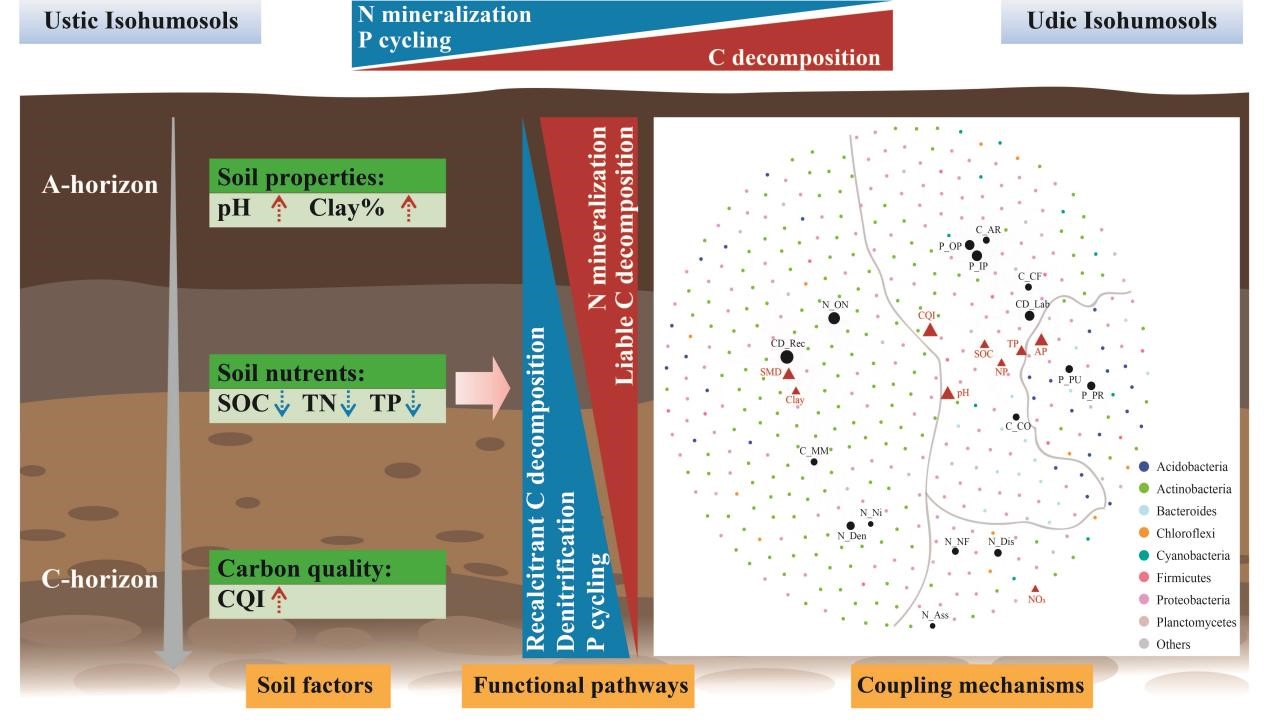The characteristics of soil microbial community composition and diversities in different ecosystems have been widely reported. However, a key question that needs to be explored is how to link the changes in these microbial taxa to ecosystem functions. In recent years, metagenomic sequencing has provided technical support for revealing soil microbe-driven biogeochemical processes.
Most of the current metagenomic studies focus on surface soils. In fact, microbial communities in deeper soils may have an important impact on long-term soil carbon sequestration. Therefore, to fully understand soil ecosystem functions, studies on the functional characteristics of deep soil microbial communities cannot be ignored.
Isohumosols is a soil order nominated based on Chinese Soils Taxonomic Classification, and according to the soil water status, it can be further divided into two suborders of Ustic and Udic Isohumosols. To reveal the coupling relationships of genes involved in carbon, nitrogen, and phosphorus cycling processes in soil profiles of Isohumosols, a research group led by WANG Guanghua from Northeast Institute of Geography and Agroecology, CAS, collected soil samples based on the diagnostic horizons from Ustic and Udic Isohumosols across Heilongjiang Province of China. The vertical distribution of soil functional gene diversities and abundances were investigated using metagenomic sequencing technology.
This work was published in Science of the Total Environment on 23 Feb 2024.
According to the researchers, the diversity and relative abundance of microbial functional genes were influenced by soil horizons and soil types. In A-horizons, the relative abundances of N mineralization and liable C decomposition genes were significantly greater, but the P cycle-related genes, recalcitrant C decomposition and denitrification genes were lower compared to C-horizons.
More importantly, based on functional gene networks, they highlighted that soil pH and carbon quality index regulate the biogeochemical cycle couplings of carbon, nitrogen and phosphorus, which is mediated by specific microbial taxa (Figure 1).
This study contributes to a deeper understanding of the ecological functions of soil microorganisms, thus providing a theoretical basis for the exploration and utilization of soil microbial resources and the development of soil ecological control strategies.

Figure 1. Variation and coupling relationship of relative abundance of carbon, nitrogen and phosphorus cycling-related genes in profiles of Isohumosols. (Image by LIU Zhuxiu)
Keywords
Coupling mechanism; Diagnostic horizons; Isohumosols; Metagenomic sequencing; Soil biogeochemical cycling
Contact:
Prof. WANG Guanghua
Northeast Institute of Geography and Agroecology, Chinese Academy of Sciences
E-mail: wanggh@iga.ac.cn
Reference:
https://doi.org/10.1016/j.scitotenv.2024.171269